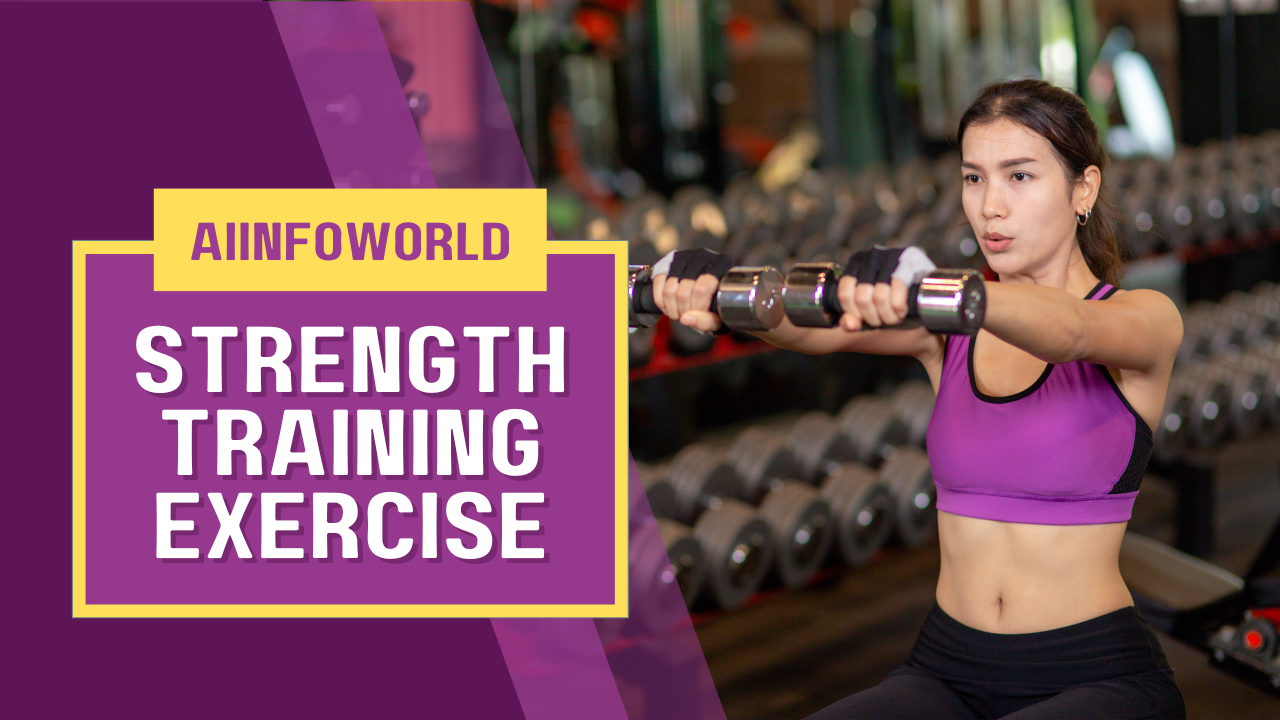Strength training exercises are crucial for anyone looking to build muscle mass effectively. Whether you’re a seasoned fitness enthusiast or a beginner, understanding the right exercises and techniques can make a significant difference in achieving your fitness goals. In this comprehensive guide, we delve into the best strength training exercises that promote muscle growth and enhance overall strength.
Understanding the Fundamentals of Strength Training
Before diving into specific exercises, it’s essential to grasp the fundamentals of strength training. Strength training involves exercises that aim to improve muscle strength by gradually increasing resistance and intensity. This can be achieved through various methods such as using weights, resistance bands, or body weight.
Benefits of Strength Training
Strength training offers a myriad of benefits beyond muscle growth:
- Increased Muscle Mass: Builds and tones muscles effectively.
- Improved Metabolism: Boosts metabolism for better calorie burning.
- Enhanced Bone Health: Strengthens bones, reducing the risk of osteoporosis.
- Better Posture and Balance: Enhances overall stability and posture.
Key Strength Training Exercises for Muscle Growth
1. Squats
Squats are a cornerstone exercise for strengthening the lower body, primarily targeting the quadriceps, hamstrings, and glutes. To perform a squat:
- Stand with feet shoulder-width apart.
- Lower your body as if sitting back into an imaginary chair, keeping your back straight.
- Push through your heels to return to the starting position.

2. Deadlifts
Deadlifts are excellent for building overall strength and targeting the posterior chain, including the lower back, glutes, and hamstrings:
- Stand with feet hip-width apart, barbell in front of you.
- Bend at the hips and knees to grip the barbell.
- Lift the bar by extending your hips and knees, keeping your back straight throughout.
3. Bench Press
The bench press is essential for upper body strength, focusing on the chest, shoulders, and triceps:
- Lie on a bench with feet flat on the floor.
- Grip the barbell with hands slightly wider than shoulder-width apart.
- Lower the barbell to your chest, then press it back up to the starting position.
4. Pull-Ups/Chin-Ups
Pull-ups and chin-ups are effective for developing upper body strength, particularly targeting the back and biceps:
- Grip a pull-up bar with palms facing away (pull-ups) or towards you (chin-ups).
- Pull your body up until your chin reaches the bar, then lower yourself back down.
5. Lunges
Lunges are beneficial for strengthening the legs and improving balance:
- Stand tall, take a step forward with one leg, lowering your hips until both knees are bent at a 90-degree angle.
- Push back to the starting position and repeat with the other leg.
Comprehensive Guide to Strength Training Exercises for Maximum Muscle Growth
Creating a Strength Training Routine
To maximize muscle growth and strength gains, it’s essential to create a well-rounded strength training routine:
- Frequency: Aim for 2-3 sessions per week, allowing muscles time to recover.
- Progressive Overload: Gradually increase the weight or resistance to continually challenge your muscles.
- Rest and Recovery: Ensure adequate rest between workouts to prevent overtraining and allow muscles to repair and grow.
Additional Tips for Effective Strength Training
1. Focus on Form and Technique
Proper form is crucial in strength training to prevent injuries and maximize effectiveness. Always prioritize maintaining correct posture and technique during exercises to target the intended muscle groups effectively.
2. Incorporate Variety
To avoid plateauing and keep your workouts interesting, incorporate a variety of exercises that target different muscle groups. This approach not only prevents boredom but also ensures balanced muscle development.
3. Warm-Up and Cool Down
Before starting your strength training session, warm up with dynamic stretches or light cardio to increase blood flow to muscles and prepare them for activity. Afterwards, cool down with static stretches to improve flexibility and reduce muscle soreness.
4. Listen to Your Body
Pay attention to your body’s signals during workouts. If you experience pain beyond normal muscle fatigue, adjust your technique or seek guidance from a fitness professional to avoid injury.
5. Nutrition and Hydration
Fueling your body with proper nutrition is essential for muscle recovery and growth. Ensure you consume an adequate amount of protein to support muscle repair and hydration to maintain optimal performance during workouts.

Common Myths About Strength Training
Myth 1: Strength Training Makes Women Bulky
This is a common misconception. Women typically do not have enough testosterone to develop large muscles like men. Strength training helps women tone and define muscles while improving overall strength and metabolism.
Myth 2: Older Adults Should Avoid Strength Training
On the contrary, strength training is highly beneficial for older adults. It helps maintain bone density, improve balance, and preserve muscle mass, contributing to better overall health and independence as you age.
Integrating Strength Training Into Your Lifestyle
Whether you’re aiming to build muscle, lose weight, or improve overall fitness, integrating strength training into your lifestyle can yield significant benefits. Consistency and commitment to your workouts are key to achieving long-term results.
Strength training is a cornerstone of physical fitness that helps build muscle, enhance bone density, and improve overall health. Whether you’re a beginner or an experienced athlete, incorporating a variety of strength training exercises into your routine can lead to significant improvements in strength, endurance, and general well-being. This guide will delve into essential strength training exercises, their benefits, and tips for maximizing your workouts.
1. The Basics of Strength Training
Strength training, also known as resistance training, involves exercises that improve muscle strength and endurance by working against a resistance. This resistance can come from free weights, machines, resistance bands, or even body weight. The primary goal of strength training is to challenge your muscles to adapt and grow stronger.
The Benefits of Incorporating Yoga into Your Flexibility Routine
1.1 Benefits of Strength Training
- Increased Muscle Mass: Regular strength training leads to muscle hypertrophy, which helps in building and toning muscles.
- Enhanced Bone Density: Weight-bearing exercises can increase bone density, reducing the risk of osteoporosis.
- Improved Metabolic Rate: Muscle tissue burns more calories at rest than fat tissue, which can help with weight management.
- Enhanced Functional Fitness: Strength training improves your ability to perform everyday tasks with ease and reduces the risk of injury.
- Boosted Mental Health: Exercise, including strength training, releases endorphins that can enhance mood and reduce symptoms of depression and anxiety.
2. Essential Strength Training Exercises
Incorporating a variety of exercises ensures that all major muscle groups are worked. Here are some fundamental strength training exercises:
2.1 Squats
Muscle Groups Targeted: Quadriceps, hamstrings, glutes, lower back
How to Perform:
- Stand with your feet shoulder-width apart and your toes slightly pointing outward.
- Lower your body by bending at the knees and hips, keeping your back straight and chest up.
- Continue lowering until your thighs are parallel to the ground or as low as comfortable.
- Push through your heels to return to the starting position.
Tips: Keep your knees in line with your toes and avoid letting them collapse inward. Engage your core throughout the movement.
2.2 Deadlifts
Muscle Groups Targeted: Hamstrings, glutes, lower back, core
How to Perform:
- Stand with your feet hip-width apart and a barbell over the middle of your feet.
- Bend at the hips and knees, grasp the barbell with an overhand grip.
- Keeping your back straight, lift the barbell by straightening your hips and knees.
- Lower the barbell back to the ground by bending at the hips and knees.
Tips: Maintain a flat back throughout the lift and avoid rounding your shoulders. Focus on hinging at the hips rather than bending at the waist.
2.3 Bench Press
Muscle Groups Targeted: Chest, shoulders, triceps
How to Perform:
- Lie on a bench with your feet flat on the floor and your back pressed firmly against the bench.
- Grasp the barbell with a grip slightly wider than shoulder-width and lower it to your chest.
- Push the barbell upward until your arms are fully extended.
- Lower the barbell back to your chest in a controlled manner.
Tips: Keep your elbows at a 45-degree angle to your torso and avoid letting the barbell bounce off your chest.
2.4 Pull-Ups
Muscle Groups Targeted: Back, shoulders, biceps
How to Perform:
- Grasp a pull-up bar with an overhand grip, hands slightly wider than shoulder-width apart.
- Hang from the bar with your arms fully extended.
- Pull yourself up until your chin is above the bar.
- Lower yourself back to the starting position in a controlled manner.
Tips: Engage your shoulder blades before pulling up and avoid swinging your body. If you’re unable to perform pull-ups, use an assisted pull-up machine or resistance bands.
2.5 Planks
Muscle Groups Targeted: Core, shoulders, back
How to Perform:
- Start in a push-up position with your forearms on the ground and your body in a straight line.
- Engage your core and hold the position for as long as possible.
- Avoid letting your hips sag or pike up.
Tips: Keep your body aligned and focus on breathing deeply while maintaining tension in your core.

3. Designing a Strength Training Program
A well-structured strength training program should include exercises that target all major muscle groups. Here’s a basic outline for creating a balanced routine:
3.1 Frequency
Aim for 2-3 days of strength training per week, allowing at least one day of rest between sessions to ensure muscle recovery.
3.2 Sets and Reps
- Beginner: 1-2 sets of 8-12 reps per exercise
- Intermediate: 2-3 sets of 6-12 reps per exercise
- Advanced: 3-5 sets of 4-12 reps per exercise
3.3 Progression
Gradually increase the weight or resistance as you become stronger to continue challenging your muscles. Aim for a progression of about 5-10% in weight or resistance every 1-2 weeks.
3.4 Rest and Recovery
Rest for 30-60 seconds between sets and 1-2 minutes between exercises. Ensure you’re getting adequate sleep and nutrition to support muscle recovery.
4. Common Mistakes and How to Avoid Them
4.1 Poor Form
Incorrect form can lead to injuries and ineffective workouts. Focus on performing each exercise with proper technique, and consider working with a trainer if you’re unsure.
4.2 Skipping Warm-Ups
Warming up prepares your muscles and joints for exercise, reducing the risk of injury. Spend 5-10 minutes on dynamic stretches or light cardio before starting your strength workout.
4.3 Neglecting Recovery
Overtraining can lead to fatigue and decreased performance. Incorporate rest days and ensure adequate hydration and nutrition to support recovery.
4.4 Lack of Variety
Repeating the same exercises can lead to plateaus and imbalances. Incorporate a mix of exercises to target different muscle groups and prevent overuse injuries.
Get Fit at Home: Easy and Effective Home Workouts to Try Now
Incorporating strength training exercises into your fitness routine offers numerous benefits, from increasing muscle mass and strength to improving overall health and well-being. By following a structured training plan, focusing on proper form, and embracing a variety of exercises, you can optimize your workouts and achieve your fitness goals effectively.










